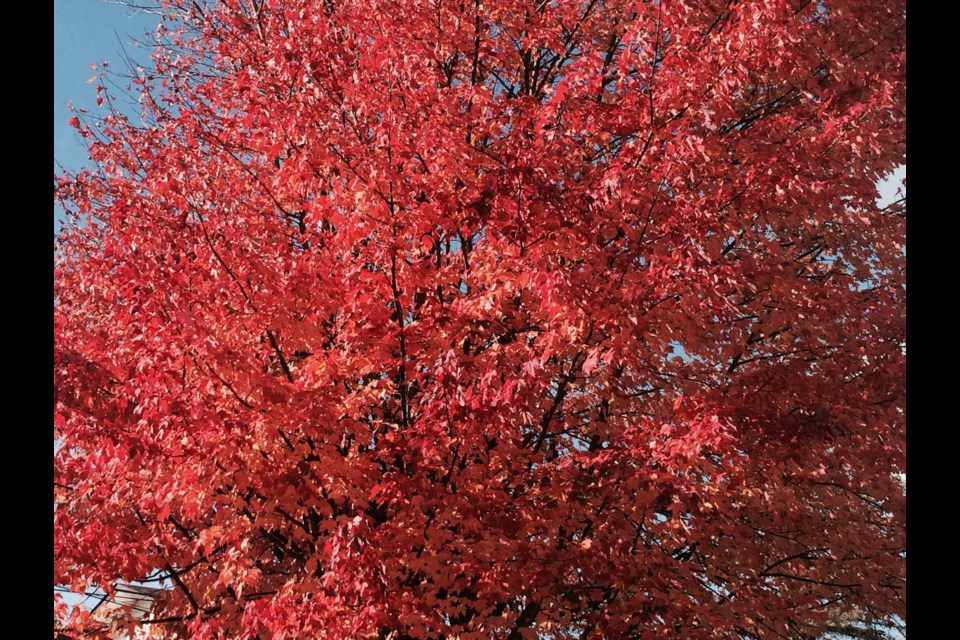The colours of autumn were still evident early last week, with many of the trees holding on to their red or yellow leaves.
Since then, rain and high winds stripped the leaves off many of those same trees.
Hal Falk, the owner of Eagle Tree and Landscape Services, says the change in colour started later, and wasn't as dramatic as last year.
"The colours that came in were kind of dull, and some of them faded away. That being said, there were some brilliant ones out there. Usually, the ones that turn first are the maples that are under stress, meaning the ones that grow on higher ground, on rocky soil or along the side of the road where the root system is not fully developed, or the water drains away from them. Stress means the trees are a bit weaker and so the whole growing season is shortened."
It was a rather disappointing fall for people expecting an abundance of vibrant colours.
Dr. Doug Gillham, a meteorologist with The Weather Network, says the anticipation of 'spectacular foliage' heading into the fall, was based on the lack of heat and drought experienced this past summer.
"However, six weeks of unusually warm and dry weather from mid-September through mid-October resulted in a season that was lacking in brilliant colour. While the leaves stayed on the trees a couple of weeks longer than normal, there was a lack of red colours, especially on the sugar maples, which just turned yellow or brown."
Gillham goes on to explain that, "Typically during the fall season, the decrease in sunlight causes the trees to slow down production and eventually stop producing chlorophyll. That causes the leaves to lose their green colour and allows other pigments to show through-giving the leaves their fall colour. In addition, cold temperatures at night causes some trees to produce a red colour pigment. This year, the warm weather during the day caused the trees to continue to produce chlorophyll longer into the fall than usual, and the lack of cold weather at night limited the production of the red pigments."
As a horticulturist and chair of Trees for Nipissing, Peggy Walsh Craig says the weather impacted more than just the trees.
"This was a funny season because we had three months of pretty much rainy weather and then we had a drought, so we got both things happening. The trees I think were poised to be brighter in colour, but then everything dried up. Some of them I noticed just turned kind of yellow instead of any very bright colour," said Walsh Craig.
"But it's not just the trees, a lot of people are reporting things like in August, tomatoes were not ripening and as the hot weather started to hit, people got a lot more of these kinds of vegetables that like heat, than usual, because we did have such a prolonged season."
Falk points out that even though this is the first of November, there are maples out there that are still green.
"Those are the maples that have a better root system and were able to absorb more moisture. Mind you most of those won't turn bright red or anything like that, they'll probably fade to yellow. If we have couple cold nights, and a couple days of windy weather afterward, that pretty much knocks them off and that's it," says Falk.
"One thing I noticed just last week was that some of the oaks really had some nice red colours. Usually they just kind of turn brown and last quite a while but some of the red oaks were probably more reddish than some of the maples. If we had mild weather until January, conceivably we'd still see green leaves at Christmas time."
